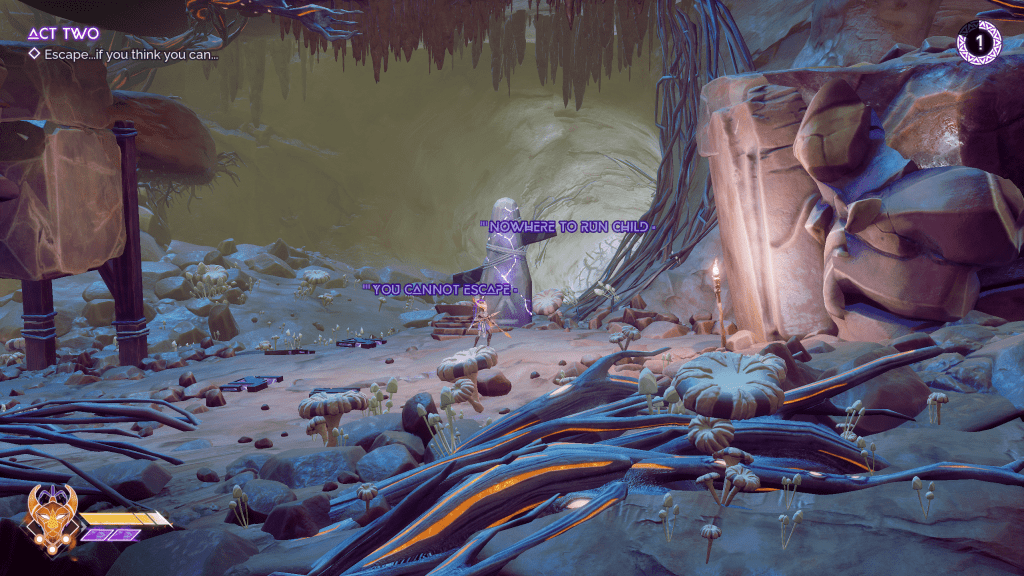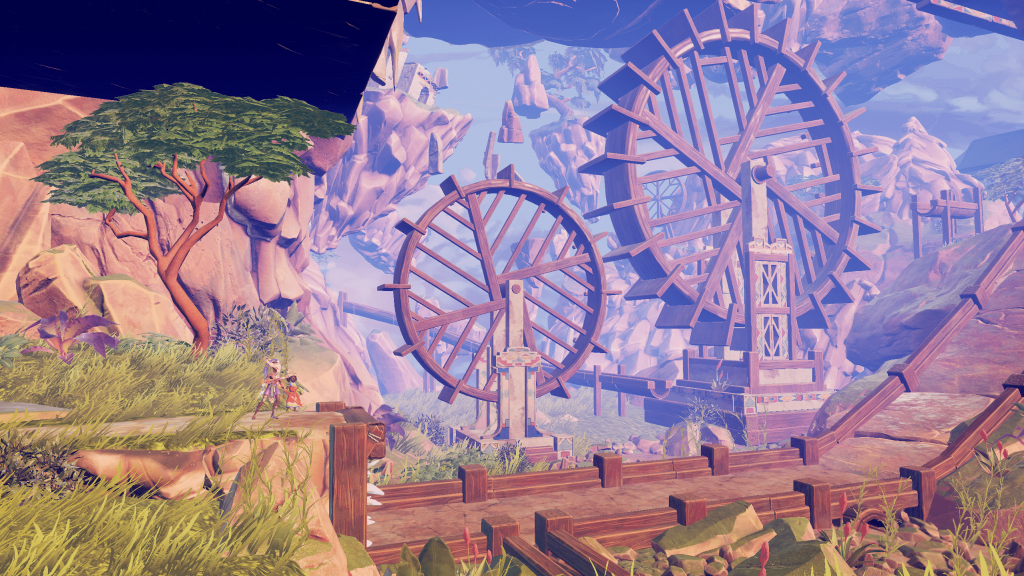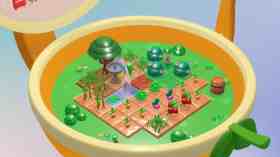‘Metroidvania’ is not a genre that I have a long history with. For those out of the loop, the name is a portmanteau of Metroid and Castlevania. The two games pioneered a specific kind of platforming adventure which takes place in sprawling, interconnected settings, the progression through which frequently requires the discovery of specific abilities in order to unlock new sections of previously explored areas.
I’ve played and loved some examples of the genre over the years, but have never gotten around to experiencing those classics which gave it its very name.
When Tales of Kenzera: ZAU came across my radar offering a vibrant Afrofuturist take on the genre, I saw it as an excellent opportunity to dive a little deeper on a gaming blindspot and enjoy a cool looking new game while doing so. I just wish I’d enjoyed it the whole way through.
I don’t know why ‘Zau’ is in all-caps in the title either
Tales of Kenzera: ZAU is the brainchild of actor and Surgent Studios founder Abubakar Salim. The story centers on a young shaman named Zau as he embarks on a grief-fuelled quest to convince the god of death to bring his recently deceased father back.
As Salim explained to GamesHub last month, it’s a deeply personal work that he felt could only be effectively mechanically embodied as a video game through the Metroidvania design framework. The story’s beats effectively mirror the tone of the biomes against which they’re set, taking Zau and the player through a refreshingly raw journey through the stages of the grief process itself.

Extremely welcoming…
Tales of Kenzera: ZAU does an excellent job of welcoming newcomers to the Metroidvania design language. Your goals are kept clear, you’re never made to backtrack particularly far at all, the pacing of which new abilities are granted feels perfect, and the degree to which secret areas are spread across the map feels excellently balanced. Checkpointing is also mostly quite forgiving (although we’ll get back to this).
Zau begins the game equipped with two masks, a sun and moon, each of which have different powers which develop further over time. The moon grants icy ranged attacks and the sun fiery melee ones, and pretty quickly you’ll begin to unlock traversal and environment manipulation powers unique to each.
Each mask also has an ultimate ability which deals massive damage to enemies. It’s charged by a meter which fills in two segments as you defeat enemies, though the methods through which it fills can also be modified using discoverable perk trinkets. Fill both, and the power is usable.
You can also hit up on the d-pad at any time to burn a single filled segment to heal a chunk of Zau’s health.
As the complexity of combat encounters and environmental navigation challenges grows, frequent snapping back and forth on the fly between each mask while keeping an eye on your meter and health becomes required to survive and progress.
It’s a system that all feels excellently tuned for the first two-thirds of Tales of Kenzera: ZAU’s 10ish hour journey, until it all comes screamingly unglued in the final few sections.

… until it isn’t
I’ll be real with you, there were multiple instances during Tales of Kenzera: ZAU’s final few hours where I considered putting the controller down for good.
The majority of enemies found through the adventure can be defeated using attacks from either mask, but as you progress deeper you’ll encounter more frequently enemies which have a colour-coded shield which must be depleted using one mask’s repertoire or the other. Take too long to fully burn that shield down, and it will regenerate.
This isn’t a bad mechanical idea in and of itself, but when you’re frequently being locked into killrooms where you have to defeat multiple waves of varied enemy combinations with a mix of shield types, all of whom will attack you in different ways relentlessly, it just becomes a headache.
As enemies become increasingly colour-coded to Zau’s masks, and as the powers of those masks become flashier through skill unlocks, it also becomes progressively harder to just visually keep track of where Zau is amidst the chaos. This frustration is all exacerbated hugely by the frequency to which these killrooms begin to also feature insta-kill spikes or lava along their walls, floors, and ceilings.
I grew so fed up with it that I began to utterly dread combat encounters, and the last couple of boss fights made me just want to walk away and do anything else for the rest of my day than play a video game.

It’s not just the design of the combat encounters which become infuriating towards the end, platforming and environment navigation also grow increasingly cruel in their required precision.
Zau does control extremely well, but you’re increasingly put into situations where the slightest misjudgement of an angle or timing of a dash will lead to his instant death. The respawn checkpoints aren’t always as kind in the latter stages as they are in earlier ones, and I was frequently wishing that the camera were pulled back just a little bit further so that I could see the path ahead a little more without having to rely on snap reflexes and blind faith.
The fact that a few sequences put you in these situations while being chased by hazards – which will also kill you instantly if they catch up to you – is even more agonising.
I absolutely get that many of the most egregious combat and platforming pains come during a segment that’s supposed to be representative of the ‘anger’ stage of grief, but it pushes the notion of player embodiment too damn far for my taste.
From bleak to bummed
I truly loved the first two-thirds of Tales of Kenzera: ZAU and it saddens me that I felt the opposite for the remainder of it.
I applaud Salim and his team for delivering upon such a deeply personal vision, and I applaud EA for getting behind such a specific work. It’s an incredibly strong outing from a new studio, for the most part anyway, and I’ll be eagerly awaiting whatever they decide to do next.
It hasn’t put me off going deeper down the Metroidvania rabbit hole, quite the opposite in fact. I just so sorely wish the difficulty curve hadn’t been so severe as to make it a difficult recommendation for other relative newbies to the genre like me.
Three stars: ★★★
Tales of Kenzera: ZAU
Platforms: PC, Switch, Xbox Series X/S, PlayStation 5
Developer: Surgent Studios
Publisher: Electronic Arts
Release Date: 24 April 2024
An PC code for Tales of Kenzera: ZAU was provided by the publisher for the purposes of this review. GamesHub reviews are rated on a five-point scale.





